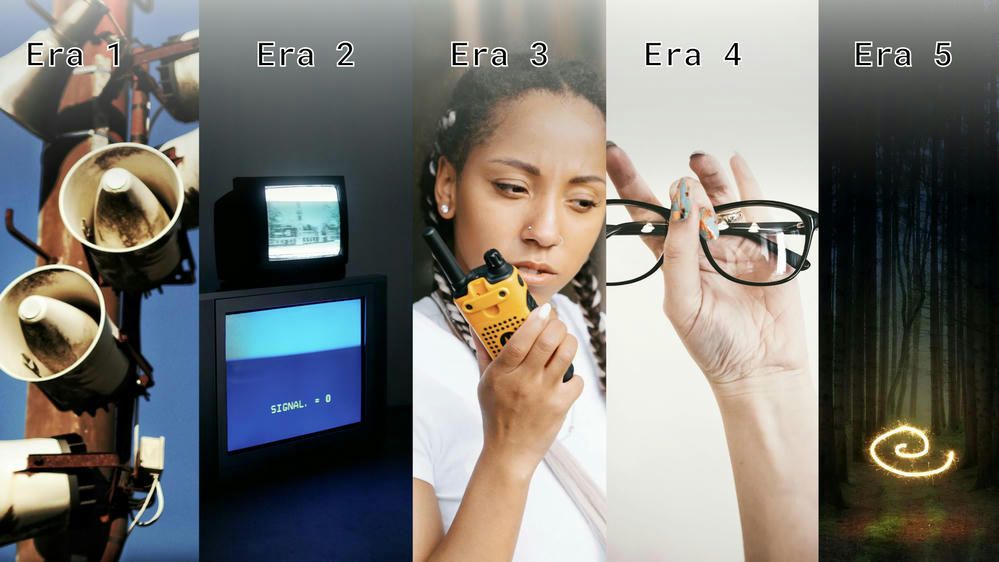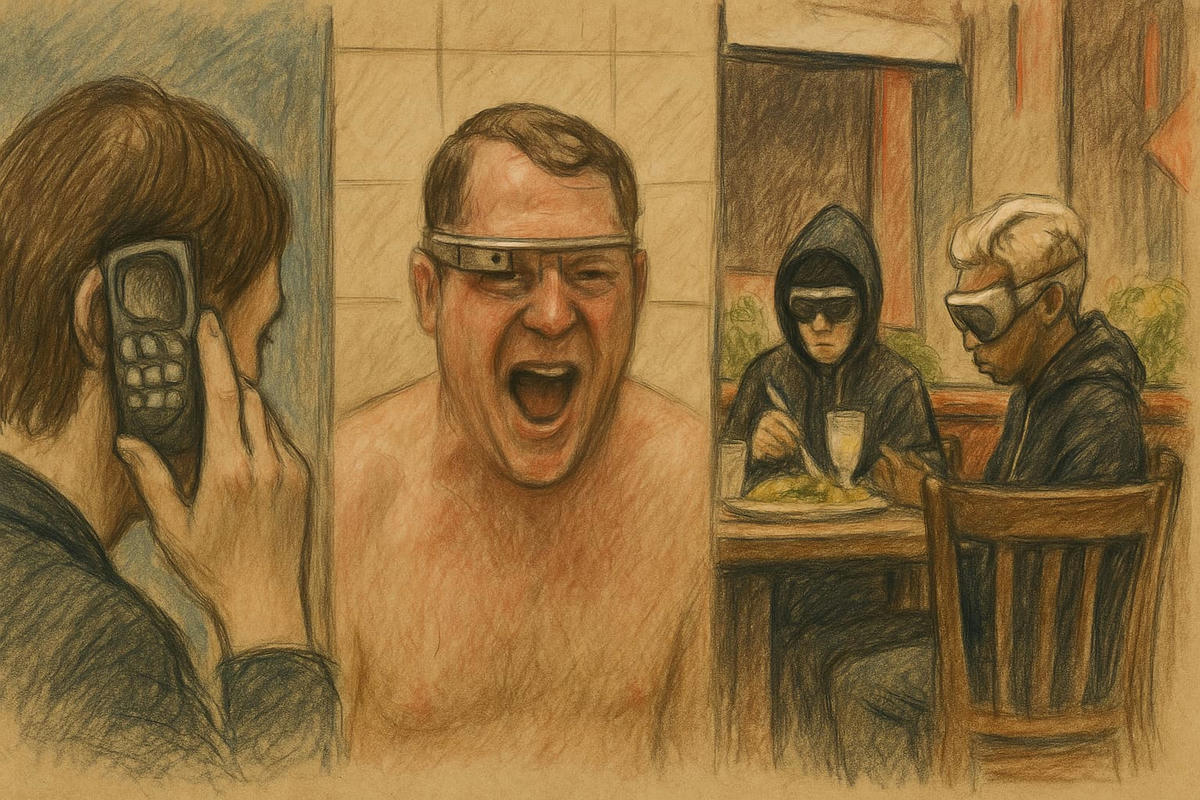A Brief History of AI Hardware
Sam Altman, known from OpenAI, and Jony Ive, the designer behind iPhone, iMac, Apple Watch and more, have announced they will develop a revolutionary new AI hardware. In an attempt to guess what it might become, here is a historical survey of hardware made specifically for AI.

The First Era: In the beginning was the word
Somewhat surprisingly, it was the e-commerce company Amazon that first released a device focused on helping people interact with AI. They acquired a Polish company, and launched its product under the name Alexa at the end of 2014. It became a massive success.
The idea was a combination of speakers and microphones that were always connected and listening for a trigger-word (in Alexa’s case, a single word). The user could then ask for various things: weather, alarms, etc. But it never got truly good. Google and Apple followed with their own “smart” speakers — but they also under-delivered.
I have a Google Home in my kitchen that I use as an egg timer and radio. I’d definitely replace it if it broke. It’s convenient to say “Hey Google, play news” and hear the latest broadcast, or set timers without touching anything while baking. But the feeling of talking to something clever that could do everything faded quickly.
The Second Era: Look at me
Another insight came quickly: many use cases require a touchscreen. Today Google and Amazon offer smart speakers with built-in displays, but that wasn’t enough to revitalize the assistant hardware segment. The hardware was probably decent, but the software was just too weak.
Anyone who’s used Siri, Alexa or Google Assistant knows they often misunderstand what you say — and even more often get it wrong anyway.
Intermission 1
There are two major problems with voice assistants. One is that it’s hard for users to know what they can do with them. What UX designers call “affordances,” “verbs,” and “mental mappings” become difficult when the system you interact with is invisible.
Voice assistants listen continuously for a trigger word from one of several lists. For example: “I’m LOOKING for a FLIGHT TICKET,” “I want to BUY a TICKET,” or “I want to FLY.” If you don’t say one of those words, nothing happens. And there is no intuitive way for the user to discover what words are “allowed.”
The second big problem: the assistants were too dumb. As a user you might assume you can speak normally and be understood. In reality you were stumbling over the right command. The system lacked genuine natural language understanding.
But then the Transformer model appeared (the model that makes Gemini, Copilot, Claude, etc. good at interpreting everyday speech) — and the next era could begin.
The Third Era: Always by your side
At the start of 2024 a new company called Rabbit released new AI hardware under the name R1. It’s a cute red-orange hybrid between a phone and a walkie-talkie. The idea is: press a side button, then speak to an AI. It includes a camera, touch screen, and speaker. R1 was marketed with the promise that Rabbit’s AI could do everything a human could on the internet.
It turned out to be false. Rabbit R1 could barely do anything, and after a while disturbing stories surfaced about Rabbit’s founders and their backgrounds in crypto scams. R1 still exists, however, and some argue it’s worth its current price tag of roughly 2,000 SEK.
Another product that failed is Humane’s AI Pin. The intent was again a device you always carry, making interaction with your LLM-powered AI assistant easier. In addition to camera and mic, it had a laser projector that could present a minimalist UI onto your hand.
The reviews were harsher than those for R1. Humane was eventually acquired in pieces by HP, and on February 28, 2025 HP shut off Humane’s servers.
Both products had in common that you could take them into the world and they promised to free us from our phones’ tyranny. The irony: one recurring criticism was that everything they did could be done better on a smartphone — in fact as apps. And as apps, they would have been worse than the well-known AI chatbots. In short: neither Rabbit R1 nor AI Pin became successes.
Before either could launch (or fail completely), other entrepreneurs tried their own projects. The most amusing is the company Friend, which sold collars with microphones and Bluetooth. There’s something appealing about a small, discreet gadget that meets our needs without dealing with GUIs. Too bad no one manages to pull it off.
The Fourth Era: I can see
Here we are now. What’s interesting about this era is that it emerged partly as a byproduct. It started with Snapchat’s Spectacles — or maybe even with Google’s Google Glass. In any case, what really accelerated the era was Meta’s variant on Spectacles: Meta Ray-Bans.
Meta built camera, speaker, and microphone into a pair of Ray-Ban frames. At first it was mainly for letting people share video from a first-person perspective. But later they added a translation feature, voice commands, and the ability to ask Meta’s AI what you’re looking at. Suddenly they had a fairly successful AI product.
The format of embedding sensors on the face recalls Google Glass, which isn’t a surprise. If you want AI assistance you need vision and hearing. Glasses do that while leaving your hands free to pull out noodles, sculpt a Totoro diorama, or fix a bike’s generator.
But wait: for all that you need a display. And Meta’s Ray-Bans don’t have one.
Exactly — and that’s what Meta Project Orion tried to solve. Imagine bulky glasses that try to look like Meta AI glasses, but with screens similar to Microsoft’s HoloLens. That lets images mix with reality — without making you look utterly ridiculous (well, almost).
Intermission 2
It feels like we have to make a brief detour and talk about the fascinating subject of tech that makes people look a bit silly™.

We begin with Nokia’s gaming phone N-Gage (or “The taco phone” as it became known). The idea was good: if someone called you while you were gaming, you would rotate it to a hot dog grip. People laughed and the next N-Gage was forced back into a conventional shape.
Next, there’s Robert Scoble’s infamous shower photo wearing Google Glass. Some say that image alone doomed Glass — making the project forever associated with nerdy oddness.
Which brings us to last year’s major hardware launch: Apple Vision Pro. Despite Apple’s efforts to make it look cooler than other VR headsets, it has a heavy aura of “sad nerd.” Not surprisingly, the only time Tim Cook has been seen wearing one was a strictly controlled Vanity Fair photoshoot. And even that didn’t help — he still looks as awkward as the poor guy recording Zuckerberg’s “spontaneous” defense of Meta Quest 3.
Returning to the fourth era: wearables with cameras.
Even if Mark Zuckerberg struggles to make Orion glasses look cool, he doesn’t look more ridiculous than usual with them on. That in itself is a heroic feat, worthy of the legendary industrial designer Dieter Rams.
Just when we thought things had stabilized, Google returned with glasses that feel like Glass on steroids. They’ve developed Android XR, an OS for everything from VR to AR. Anyone can license it and build their own AI glasses. The demo is impressive. Glasses might indeed be the optimal form factor for AI hardware. The dust will settle, the path is clear.
Or is it?
The Next Era? An enigma wrapped in a Riddle
Speaking of Dieter Rams, his biggest fan, Jony Ive, and OpenAI’s Sam Altman, have something new up their sleeve in the AI hardware world. As of this writing they have not revealed anything concrete. Probably we won’t see anything before 2026. The little we do know:
- It’s a product “fully aware of its owner’s environment and life”
- It’s a device that must fit in a pocket
- It’s intended as the third device on your desk after your laptop and your phone
- It is not a phone
- It is likely not a wearable
- It is not a pair of glasses
So what is it? The only thing left after all those clues is a small box with a mic, maybe a speaker, and perhaps a touchscreen… Sounds like Rabbit R1.
Could they really be that stupid? Maybe not. Who knows. We live in the best of all possible worlds.